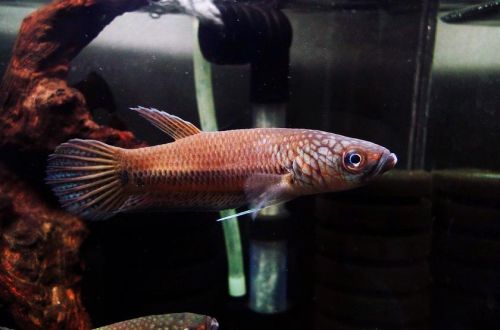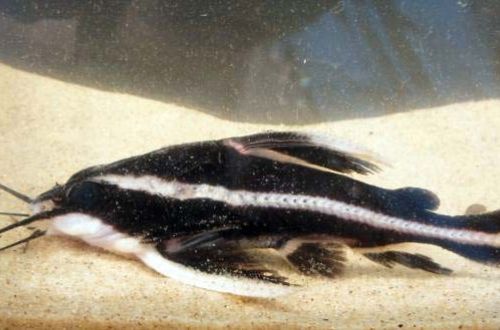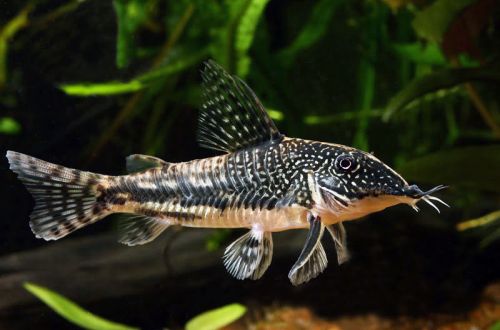
Bulungan Cockerel
Betta Bulungana or Cockerel Bulungana, belongs to the Osphronemidae family. Refers to an undescribed species from a collection labeled ‘Jungle of Bulungan’ by suppliers, referring to the locality on the island of Borneo where the exported fish specimens were collected. Not the most up-to-date species, therefore not recommended for beginner aquarists.

Contents
Habitat
Comes from Southeast Asia. The homeland of this species are small rivers flowing through the hilly terrain in the jungle of the Indonesian part of the island of Borneo in the province of East Kalimantan. A typical biotope is a poorly lit shallow stream with clear water and substrates of stones, sand and numerous plant debris (leaves, branches, snags), overgrown along the banks with shade-loving plants, mosses and ferns.
Brief information:
- The volume of the aquarium – from 70 liters.
- Temperature – 21-27°C
- Value pH — 5.5–7.5
- Water hardness – 0–11 dGH
- Substrate type – any dark
- Lighting – subdued
- Brackish water – no
- Water movement – little or no
- The size of the fish is 9–10 cm.
- Food – any food
- Temperament – conditionally peaceful
- Content – in a pair or group together with other species
Description
Adults reach a length of 9–10 cm. It is considered a close relative of the Betta unimaculata, having many features in common with it. The fish have a strong body and short fins. Coloration grey-red. In males, unlike females, turquoise shades are noticeable on the head and front of the body.
Food
In nature, it feeds mainly on insects and other invertebrates. In home aquaria, the diet should be appropriate and include live or frozen foods such as daphnia, brine shrimp, bloodworms, mosquito larvae, fruit flies, in combination with dry food in the form of flakes, granules, popular in the aquarium trade.
Maintenance and care, arrangement of the aquarium
The optimal size of the aquarium for one pair of fish starts from 70-80 liters. Not picky about the choice of design, but some points still should not be neglected. This is a subdued level of lighting or diffused light, for example, achieved with the help of floating plants, and the presence of places for shelters, which can be snags or any decorative objects.
Like any other fish living in nature in flowing waters, Betta Bulungana needs clean water. Accumulation of organic waste (feed residues, excrement) should not be allowed, regular cleaning should be carried out and the necessary hydrochemical composition should be maintained within an acceptable temperature range. Of key importance, in addition to the mandatory maintenance procedures for the aquarium, is the filtration system.
Behavior and Compatibility
Belongs to the group Fighting fish, which implies some features of their behavior. First of all, this refers to the rivalry of males for position in the intraspecific hierarchy and the attention of females, resulting in skirmishes. However, it does not come to serious injuries, but still in a small aquarium it is recommended to maintain a group consisting of only one male and several females, or in a pair. In relation to other species, they are peacefully disposed. Compatible with non-aggressive fish of comparable size.
Breeding / breeding
Bulungan males are characterized by the manifestation of parental care. They do not form masonry at the bottom or among plants, leaving it to its fate, but hatch eggs in their mouths, and only male individuals are engaged in this. During spawning, the male takes several dozen fertilized eggs into his mouth and retires to a quiet place or shelter away from the attention of other fish. At this time, he should be protected from excessive stress, otherwise he may release eggs ahead of time or swallow them. The incubation period lasts about 2 weeks, after which fully formed fry appear. From that moment on, parental instincts begin to fade and Petushki no longer show interest in their offspring.
Fish diseases
The cause of most diseases is unsuitable conditions of detention. A stable habitat will be the key to successful keeping. In the event of symptoms of the disease, first of all, the quality of the water should be checked and, if deviations are found, measures should be taken to correct the situation. If symptoms persist or even worsen, medical treatment will be required. Read more about symptoms and treatments in the Aquarium Fish Diseases section.





